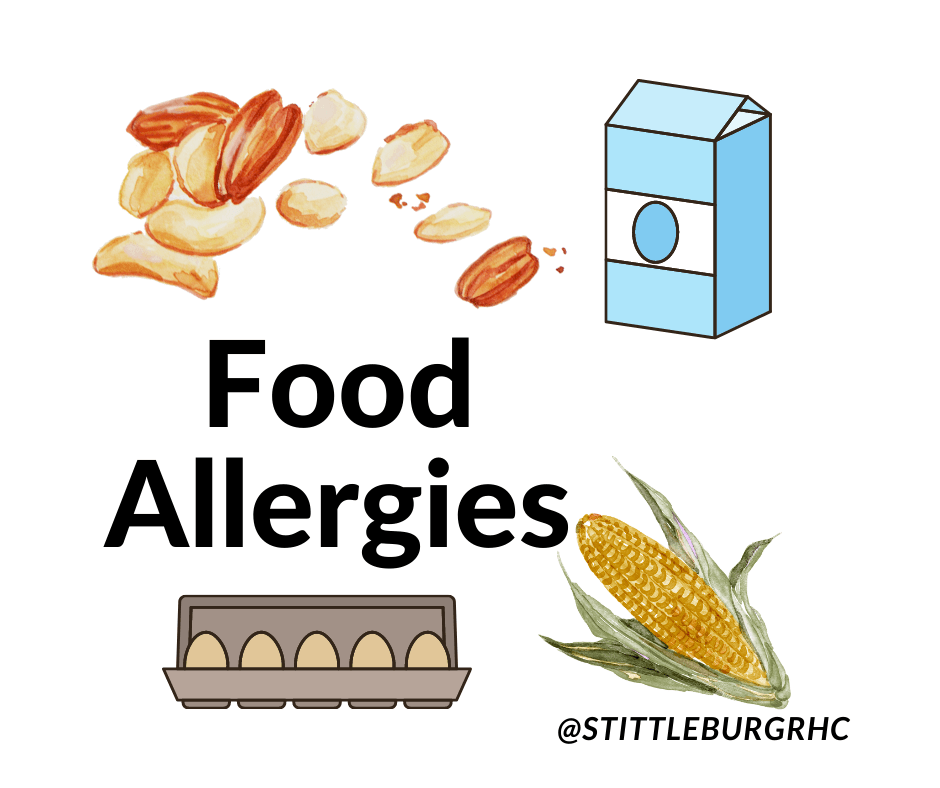Let's talk genetic code!
Let's talk genetic code!
Did you know, more than 4,000 diseases are thought to stem from mutated genes inherited from one's mother and/or father?!
Let’s Talk About Genetic Code/Genetic Makeup!
Some quick and easy definitions-
- DNA (deoxyribonucleic acid): Nucleic acid that carried genetic information contained in each cell.
- Genotype: The genetic makeup of an organism.
- Phenotype: The expression of a certain trait based on genetic and environmental influences.
You cannot change your genetic code. The human genome is mostly the same in all people; but there are variations across the genome. A genome is all the genetic material in an organism. A gene is the prime marker of your genetics. Genes are made up of DNA. DNA is passed from parent to child. This is done with the making of new cells, to do this, an existing cell divides in two. Before it divides, the cell copies its DNA. DNA is the hereditary material aka the cells genetic instructions. Sometimes cells make mistakes during the copying process - essentially ‘typos’. These ‘typos’ lead to variations in the DNA sequence at specific locations, called single-nucleotide polymorphisms, or SNPs (pronounced "snips"). Each SNP represents a difference in a single DNA building block, called a nucleotide.
As I said earlier, you cannot change your genetic code.
However, you can learn about your genetic risk based on specific variations in your genetic code.
What am I talking about?
Do you wonder why Brittney from work lost 50 pounds on a specific diet, that you lost 5 pounds on? Do you wonder why your mental/emotional response is significantly different than your parents or your siblings? Do you wonder why your stomach is bloated after eating? Do you wonder why you just can’t get your cholesterol and/or insulin under control? Have you tried “every supplement under the sun” but never noticed any change besides your urine color?
THE ANSWER TO WHY? Drum roll please....
YOUR GENES!!
And no, I do not mean the jeans you're wearing, or my good friend Gene that I grew up with, I mean your genetic code.
Your DNA is the author of your life- how you process foods, how you detoxify toxins, how you react to environmental stressors, how you react to exercise, how your family health history impacts your health, etc.
These answers can be obtained through a simple cheek swab in our office! SAY WHAT?! Yes, a cheek swab. No poking or prodding trying to find “the good vein.” No long waits in the waiting room. The best part,
you can even do this test from home!
I’m excited to share with you a life changing analysis called Gene SNP™- DNA Analysis!
This analysis looks at 48 different genes and 61 areas of health to reveal infinite genetic combinations in diet, lifestyle, exercise, sleep, and emotional health.
I’m going to list all the tested genes along with the supporting science- compiled from Gene SNP, for all of my science loving folk, at the end of this blog.
When it comes to our bodies, making choices that have a positive impact on our health and wellness are vital. The key to your wellness starts (well, started) in your genes! Please contact us today to schedule your free consultation.
Let’s get back to health,
Dr. Taryn
The Gene SNP™ analyzes the following:
Don't worry, I read and interpret your results!
"Genes associated with mental emotional health and eating behavior: MTHFR, FAIM2, MC4R, SEC16B, TMEM18, COMT, NERG1, HTR2A, TAS1R, SLC2A, DRD2, LEPR:
- Willer, C.J. et al, 2009, Six new loci associated with body mass index highlight a neuronal influence on body weight regulation. Nature Genetics, 41(1). 25-34
- Morton, L.M. et al, 2006, DRD2 genetic variation in relation to smoking and obesity in the Prostate, Lung, Colorectal, and Ovarian Cancer Screening Trial. Pharma Cogenetics Genomics, 16(12). 901-10
- den Hoed, M. et al, 2009, Postprandial responses in hunger and satiety are associated with the rs9939609 single nucleotide polymorphism in FTO. American Journal of Clinical Nutrition, 90(5). 1426-32.
- Doehring A, Kirchhof A, Lotsch J., 2009, Genetic diagnostics of functional variants of the human dopamine D2 receptor gene. Psychiatric Genetics, 19(5). 259-68
- Furusawa, T.et al, 2010, The Q223R polymorphism in LEPR is associated with obesity in Pacific Islanders. Human Genetics, 127(3). 287-294
Genes associated with inflammatory response: ETV5, NCR3, ADIPOQ, GC:
- Chung, H.Y., et al, The inflammation hypothesis of aging: molecular modulation by calorie restriction. Ann NY Acad Sci 928, 327-335 (2001)
- Ferrucci, L. et al, 2009, Common variation in the beta-carotene 15,15'-monooxygenase 1 gene affects circulating levels of carotenoids: a genome-wide association study. American Journal of Human Genetics, 84(2). 123-33
- Grimble, R.F., Nutritional modulation of immune function. Proc Nutr Soc 60, 389-397(2001)
- Grimble R., et al. The ability of fish oil to suppress tumor necrosis factor alpha production by peripheral blood mononuclear cells in healthy men is associated with polymorphisms in genes that influence tumor necrosis factor alpha production. American Journal of Clinical Nutrition. 76(2): 454-459, 2002.
- Terry, c., et al. Cooperative influence of genetic polymorphisms on interleukin 6 transcriptional regulation. Journal of Biological Chemistry. 275: 18138-18144, 2000.
- Morton, L.M. et al, 2006, DRD2 genetic variation in relation to smoking and obesity in the Prostate, Lung, Colorectal, and Ovarian Cancer Screening Trial. Pharma Cogenetics Genomics, 16(12). 901-10.
Genes Associated with Behavior: MC4R, FAIM2, SEC16B, TAS2R38, DRD2, MTHFR:
- Loos, R.J. et al, 2008, Common variants near MC4R are associated with fat mass, weight and risk of obesity. Nature Genetics, 40(6). 768-75.
- Willer, C.J. et al , 2009, Six new loci associated with body mass index highlight a neuronal influence on body weight regulation. Nature Genetics, 41(1). 25-34
- Dotson, C.D. et al, 2010, Variation in the gene TAS2R38 is associated with the eating behavior disinhibition in Old Order Amish women. Appetite, 54(1). 93-9.
- Vimaleswaran, K. S. et al, 2009, Physical activity attenuates the body mass index increasing influence of genetic variation in the FTO gene. American Journal Clinical Nutrition., 90(2). 425-428
- Morton, L.M. et al, 2006, DRD2 genetic variation in relation to smoking and obesity in the Prostate, Lung, Colorectal, and Ovarian Cancer Screening Trial. Pharma Cogenetics Genomics, 16(12). 901-10
- Fushan, A.A. et al, 2009, Allelic polymorphism within the TAS1R3 promoter is associated with human taste sensitivity to sucrose. Current Biology, 19(15). 1288-93.
- Matsuo, K. et al, 2006, Alcohol dehydrogenase 2 His47Arg polymorphism influences drinking habit independently of aldehyde dehydrogenase 2 Glu487Lys polymorphism Cancer Epidemiology, Biomarkers & Prevention, 15(5). 1009-13
Genes associated with cholesterol metabolism, triglyceride balance, vascular flow and tissue development: FTO, ADIPOQ, ETV5, APOA2, LIPC, MTHFR, EDN1:
- Krauss RM, What can the genome tell us about LDL cholesterol? Lancet 2008, 371:450-452.
- Regieli J.J. et al, 2009, PPAR gamma variant influences angiographic outcome and 10-year cardiovascular riski in male symptomatic coronary artery disease patients. Diabetes Care, 32(5). 839-44
- Bidlack, W. and R. L. Rodriguez, Taylor and Francis , Nutritional Genomics: Dietary Regulation of Gene Function and Human Disease. 2011.
- Brousseau, M.E., et al, Cholesteryl ester transfer protein TaqI b2b2 Genotype is associated with higher HDL cholesterol levels and lower risk of coronary heart disease end points in men with HDL deficiency: Veterans Affairs HDL Cholesterol Intervention Trial. Arterioscler Thromb Vasc Biol 22, 1148-1154 (2002)
- Rankinen, T. et al, 2007, Effect of endothelin 1 genotype on blood pressure is dependent on physical activity or fitness levels. Hypertension, 50(6). 1120-5
- Chen, W. et al, Combined effects of endothelial nitric oxide synthase gene polymorphism (G894T) and insulin resistance status on blood pressure and familial risk of hypertension in young adults: the Bogalusa Heart Study. Am J Hypertens 14, 1046-1052 (2001)
- Ordovas, J.M. et al, 2002, Dietary fat intake determines the effect of a common polymorphism in the hepatic lipase gene promoter on high-density lipoprotein metabolism: evidence of a strong dose effect in this gene-nutrient interaction in the Framingham
- Dullaart, R.P., et al, Cholesteryl ester transfer protein gene polymorphism is a determinant of HDL cholesterol and of the lipoprotein response to a lipid-lowering diet in type 1 diabetes. Diabetes 46, 2082-2087 (1997)
- Verhoeff, B., et al. The effect of a common methylenetetrahydrofolate reductase mutation on levels of homocysteine, folate, vitamin B12 and on the risk of premature atherosclerosis. Atherosclerosis. 141(1): 161-166, 1998
- Leeson, C.P., Glu298Asp endothelial nitric oxide synthase gene polymorphism interacts with environmental and dietary factors to influence endothelial function. Circ Res 90, 1153-1158 (2002)
- Warodomwichit, D. et al, 2009, The monounsaturated fatty acid intake modulates the effect of ADIPOQ polymorphisms on obesity. Obesity (Silver Spring), 17(3). 510-7.
- Brown, C.A., et al, A common polymorphism in methionine synthase reductase increases risk of premature coronary artery disease. J Cardiovasc Risk 7, 197-200 (2000)
- Corella, D. et al, 2009, APOA2, dietary fat, and body mass index: replication of a gene-diet interaction in 3 independent populations. Archives of Internal Medicine, 169(20). 1897-906.
- Brown, S., et al. Interaction between the APOC3 gene promoter polymorphisms, saturated fat intake and plasma lipoproteins. Atherosclerosis. 170: 307-313, 2003.
- Wallace, A., et al. Variants in the cholesterol ester transfer protein and lipoprotein lipase genes are predictors of plasma cholesterol response to dietary change. Atherosclerosis. 152: 327-336, 2000.
- Dhillon, P.K., 2011, Common Polymorphisms in the Adiponectin and Its Receptor Genes, Adiponectin Levels and the Risk of Prostate Cancer. Cancer Epidemiology, Biomarkers & Prevention, 20. 2618-2627
Genes associated with antioxidant function, immunity and detoxification: COMT, NCR3, MTHFR, CYP1A2, ALDH2:
- Rock, C.L., et al, Nutrition genetics and risks of cancer. Annu Rev Public Health 21, 47-64 (2000)
- Pool-Zobul, B, et al, Mechanisms by which vegetable consumption reduces genetic damage in humans. Cancer Epidemiol. Biomarkers Prev. 7, 891-99 (1998)
- Steinkellner, H., et al, Effects of cruciferous vegetables and their constituents on drug metabolizing enzymes involved in the bioactivation of DNA-reactive dietary carcinogens. Mutation Research, 480-481,285-297 (2001)
- Christensen, B., et al, Genetic polymorphisms in methylenetetrahydrofolate reductase and methionine synthase, folate levels in red blood cells, and risk of neural tube defects. Am J Med Genet 84, 151-157 (1999)
- Sachae, C. et al, 1999, Functional significance of a C-->A polymorphism in intron 1 of the cytochrome P450 CYP1A2 gene tested with caffeine. British Journal of Clinical Pharmacology, 47(4). 445-9
- Parke, D.V. “Antioxidants and disease prevention: mechanisms of action”. Antioxidants in Human Health. CABI Publishing, 1999.
- Chen, J, et al, A methylenetetrahydrofolate reductase polymorphism and the risk of colorectal cancer. Cancer Res 56, 4862-4864 (1996)
- Jacques, P.F., et al, Relation between folate status, a common mutation in methylenetetrahydrofolate reductase, and plasma homocysteine concentrations. Circulation 93, 7-9 (1996)
- Ma, J., et al, Methylenetetrahydrofolate reductase polymorphism, dietary interactions, and risk of colorectal cancer. Cancer Res 57, 1098-1102 (1997)
- Martinez de Villarreal, L.E., et al, Folate levels and N(5),N(10)-methylenetetrahydrofolate reductase genotype (MTHFR) in mothers of offspring with neural tube defects: a case-control study. Arch Med Res 32, 277-282 (2001)
- Slattery, M.L., et al, Methylenetetrahydrofolate reductase, diet, and risk of colon cancer. Cancer Epidemiol Biomarkers Prev 8, 513-518 (1999)
- Change, A., et al. The effect of 677 C T and 1298 A C mutations on plasma homocysteine and 5,10- methylenetetrahydrofolate reductase activity in healthy subjects. British Journal of Nutrition. 83(6): 593-596, 2000.
- Jacques, P., et al. Relation between folate status, a common mutation in methylenetetrahydrofolate reductase, and plasma homocysteine concentrations. Circulation. 93(1): 7-9, 1996.
- Miller M., and Mohrenweiser, H. Genetic variability in susceptibility and response to toxicants. Toxicology Letters. 120(1-3): 269-280, 2001.
- Cosma, G., et al. Relationship between genotype and function of the human CYP1A1 gene. Journal of Toxicology and Environmental Health. 40(2-3): 309-316, 1993.
- Bosron, W. and Ting-Kai, L. Genetic polymorphism of human liver alcohol and aldehyde dehydrogenases, and their relationship to alcohol metabolism and alcoholism. Hepatology. 6(3):502 - 510, 1986.
- Takeshita, T. and Morimoto, K. Accumulation of hemoglobin-associated acetaldehyde with habitual alcohol drinking in the atypical ALDH2 genotype. Alcohol Clinical and Experimental Research. 24(1): 1-7, 2000.
Genes associated with glucose balance: DRD2, LEP, PPARg2, PCSK1, LEPR, FTO, ADIPOQ, PPARD, SLCA2, SH2B1:
- Wilcox G. Insulin and Insulin Resistance. Clinical Biochemist Reviews. 2005;26(2):19-39
- Hautala, A.J. et al, 2007, Peroxisome proliferator-activated receptor-delta polymorphisms are associated with physical performance and plasma lipids: the HERITAGE Family Study. American Journal of Physiology Heart and Circulatory Physiology, 292(5). H2498-505
- Eny, K.M. et al, 2008, Genetic variant in the glucose transporter type 2 is associated with higher intakes of sugars in two distinct populations. Physiological Genomics, 33(3). 355-60.
- Deeb, S.S., et al, A Pro12Ala substitution in PPARgamma2 associated with decreased receptor activity, lower body mass index and improved insulin sensitivity. Nat Genet 20, 284-287 (1998)
- Kadowaki, T., et al, The role PPARgamma in high-fat diet-induced obesity and insulin resistance. J Diabetes Complications 16, 41-45 (2002)
- Li, S., et al. The peroxisome proliferator-activated receptor-gamma2 gene polymorphism (Pro12Ala) beneficially influences insulin resistance and its tracking from childhood to adulthood: the Bogalusa Heart Study. Diabetes. 52: 1265-1269, 2003.
- Ostgren, C., et al. Peroxisome proliferator-activated receptor-gammaPro12Ala polymorphism and the association with blood pressure in type 2 diabetes: Skaraborg hypertension and diabetes project. Journal of Hypertension. 21: 1657-1662, 2003.
Genes associated with obesity: ACTN3, FTO, ADIPOQ, PPARD, PPARG, LEP, LEPR:
- Warodomwichit, D. et al, 2009, The monounsaturated fatty acid intake modulates the effect of ADIPOQ polymorphisms on obesity. Obesity (Silver Spring), 17(3). 510-7.
- Furusawa, T.et al, 2010, The Q223R polymorphism in LEPR is associated with obesity in Pacific Islanders. Human Genetics, 127(3). 287-294
- Huuskonen, A. et al, 2010, Genetic variations of leptin and leptin receptor are associated with body composition changes in response to physical training. Cell Biochemistry and Function, 28(4). 306-12
- Loos, R.J. et al, 2008, Common variants near MC4R are associated with fat mass, weight and risk of obesity. Nature Genetics, 40(6). 768-75.
- Memisoglu, A. et al, 2003, Interaction between a peroxisome proliferator-activated receptor gamma gene polymorphism and dietary fat intake in relation to body mass. Human Molecular Genetics, 12(22). 2923-29
- Yang, N. et al, 2003, ACTN3 genotype is associated with human elite athletic performance. American Journal of Human Genetics, 73(3). 627-31.
- Kring, S.I. et al, 2009, Polymorphisms of serotonin receptor 2A and 2C genes and COMT in relation to obesity and type 2 diabetes Public Library of Science One, 4(8). e6696.
- Corella, D. et al, 2009, APOA2, dietary fat, and body mass index: replication of a gene-diet interaction in 3 independent populations. Archives of Internal Medicine, 169(20). 1897-906.
- Okuda, M. et al, 2011, Association between the FTO gene and overweight in Japanese children and adolescents. Pediatric Diabetes, 12. 494-500
- Benzinou, M. et al, 2008, Common nonsynonymous variants in PCSK1 confer risk of obesity. Nature Genetics, 40(8). 943-5.
- Orkunoglu-Suer, F.E. et al, 2008, INSIG2 gene polymorphism is associated with increased subcutaneous fat in women and poor response to resistance training in men. BMC Medical Genetics, 9. 117
Genes associated with nutrient utilization: MMAB, KCD10, KCD15, MCM6, INTERGENIC, BCM01, GC, NBPF3, FUT2:
- Eastell, R. and Lambert, H., Diet and healthy bones., Calcif Tissue Int 70, 400-404 (2002)
- Lorentzon, M., et al, Vitamin D receptor gene polymorphism is related to bone density, circulating osteocalcin, and parathyroid hormone in healthy adolescent girls. J Bone Miner Metab 19, 302-307
- Ralston, S.H., Genetic control of susceptibility to osteoporosis. J Clin Endocrinol Metab 87, 2460-2466 (2002)
- Prentice, A., The relative contribution of diet and genotype to bone development. Proc Nutr Soc 60, 45-52 (2001)
- Tanaka, T. et al, 2009, Genome-wide association study of vitamin B6, vitamin B12, folate, and homocysteine blood concentrations. American Journal of Human Genetics, 84(4). 477-82
- Leung, W.C. et al, 2009, Two common single nucleotide polymorphisms in the gene encoding beta-carotene 15,15'-monoxygenase alter beta-carotene metabolism in female volunteers. FASEB J, 23(4). 1041-53
- Wang, T.J. et al, 2010, Common genetic determinants of vitamin D insufficiency: a genome-wide association study. The Lancet, 376 (9736). 180-188.
- Enattah, N.S.; Sahi, T; Savilahti, E. et al, 2002, Identification of a variant associated with adult-type hypolactasia. Nature Genetics, 30(1). 233-7
- Ferrari, S., et al, Bone mineral mass and calcium and phosphate metabolism in young men: relationships with vitamin D receptor allelic polymorphisms. J Clin Endocrinol Metab 84, 2043-2048 (1999)
- Warren, R.B. et al, 2009, Outcomes of methotrexate therapy for psoriasis and relationship to genetic polymorphisms. British Journal of Dermatology, 160(2). 438-41.
- Ferrucci, L. et al, 2009, Common variation in the beta-carotene 15,15'-monooxygenase 1 gene affects circulating levels of carotenoids: a genome-wide association study. American Journal of Human Genetics, 84(2). 123-33
- Junyent, M. et al, 2009, Novel variants at KCTD10, MVK, and MMAB genes interact with dietary carbohydrates to modulate HDL-cholesterol concentrations in the Genetics of Lipid Lowering Drugs and Diet Network Study. American Journal Clinical Nutrition, 90(3). 686-94"
References:
Gene SNP
Market America, Inc
NutraMetrix











Share On: